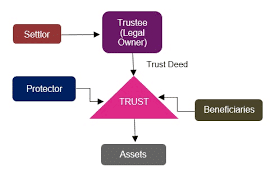Have you been wondering what ‘Balloon Payment’ means? Or you are probably curious about how it works. Here is an article that provides insight into the mortgage balloon payment concept. It explains how a balloon loan/mortgage payment works and many other things you might want. Do not hesitate to read till the end. Read on!!
What is a Balloon Payment?
A balloon payment is a one-time payment made at the end of the loan’s term that is much larger than all the previous installments combined. A balloon payment is a loan type with smaller monthly payments towards the beginning of the term and a single, larger-than-normal payment at the end. For borrowers, they can be appealing but dangerous options.
On installment loans without a balloon option, the loan debt is reduced over time with a series of fixed installments.
In exchange for a more significant payment towards the conclusion of the loan’s term, balloon payments let borrowers lower that fixed payment amount.
These loans are generally advantageous for applicants with excellent credit and a sizable salary.
What is the Ballon Payment Mortgage?
Homebuyers who meet specific criteria can finance their properties with balloon mortgages with low monthly payments.
Interest-only mortgages, which let borrowers put off paying the principal for 5 to 10 years while only making interest payments, are a typical illustration of a balloon mortgage.
Homebuyers with high net worth typically use interest-only and other balloon mortgages because they have the financial resources to pay down a sizable principal on a regular amortization schedule.
When the low payment period on a balloon mortgage expires, most borrowers rarely make the balloon payment. Instead, it’s typical to refinance into a different mortgage or sell the house to avoid having to pay the large lump sum in cash.
A balloon mortgage starts with set payments for a set amount of time and finishes with a single, large payment. Because it is substantially more significant than the initial installments, the one-time payment is a balloon payment.
According to the definition of a balloon loan, the final payment is at least twice as much as the average monthly payment on the mortgage.
Balloon payments typically cost tens of thousands of dollars. Before the Great Recession in the mid-to-late 2000s, balloon loans were more frequently used in mortgage lending. Homebuyers looking for low-cost mortgages found the minimal initial payments to be appealing.
Typically, buyers had a new mortgage in mind and intended to refinance before the balloon payment was due. Unfortunately, many homeowners could not refinance as home values fell during the financial crisis.
What Is Balloon Payment On A Loan?
A balloon payment on a loan is a loan that does not fully amortize during its tenure.
It is not fully amortized. Thus, a balloon payment is necessary to pay off the loan’s remaining principal balance at the end of the period.
Because balloon loans often have lower interest rates than loans with longer maturities, they can be appealing to short-term borrowers.
When considering refinancing, the borrower must consider the possibility that the loan would reset at a higher interest rate.
With a balloon payment on a loan, the last payment comprises a significant percentage of the principal (the original amount borrowed). So, the amount of principal that must be paid back after the loan period is negotiable.
The two most typical choices are:
- The borrower pays back a portion of the loan’s principal each month with interest (the lender’s fee), and the remaining balance is due when the loan expires (i.e., when the loan is due). The borrower pays only interest in monthly installments; the remaining principal is paid in full when the loan is due.
- Companies that want predictable cash flow requirements and flexible repayment alternatives should consider balloon payment loans.
How Does A Balloon Payment Work?
The phrase “balloon” denotes a disproportionately substantial final payment.
Typically, balloon payments are at least twice as much as the loans before installments. Because the ordinary homeowner often cannot make a huge balloon payment after the mortgage, balloon payments are more common in commercial lending than consumer financing.
With short-term loans (often three to seven years) that do not fully amortize, balloon payments are typically necessary, preventing the principal balance from being reduced over time by repayments.
A balloon payment is necessary to pay off the entire loan sum. You’ll typically have fixed monthly payments and lower interest rates during the first phase. You might have interest-only monthly payments in some circumstances.
For borrowers with a good steady income and excellent credit, balloon loans, which could be a mortgage, an auto loan, or another type of amortized loan, are thought to be the best option.
What is an example of a Mortgage Balloon Payment?
Consider a scenario in which a borrower takes out a $200,000 mortgage with a seven-year term and a 4.5% interest rate.
They will pay $1,013 every month for seven years. They have a $175,066 balloon payment due at the end of the seven-year term.
Is Mortgage Balloon Payment a Good Idea?
Yes, It is a good idea. This can buy some time for a small business to become profitable before needing to repay the capital.
If your firm has trouble getting credit, a mortgage balloon payment may be a good idea. The loan can buy you more time to improve your credit.
What Is a Disadvantage Of A Balloon Payment?
People who have loans with balloon payments take an enormous risk since even though they don’t have to pay much of the principal, they still have an enormous debt to pay at the end of the loan term.
If borrowers cannot pay the principal in full at once, they must try refinancing.
They may be subject to loans with excessive terms if short-term interest rates have climbed or the debtor’s credit rating has decreased since the loan was made.
What Happens If You Cannot Pay Balloon Payment?
If you cannot make the final balloon loan payment before your balloon loan term ends, you will be required to default.
This implies that the lender can foreclose on the property, which might have disastrous effects on your finances and credit.
Can I Pay My Balloon Payment Monthly?
You may be able to refinance the balloon payment with some lenders so that you can pay it in monthly installments rather than all at once.
Naturally, this effectively undermines most of the advantages of the balloon feature, and you will probably have to pay interest on this refinanced amount.
What Does a 5-Year Balloon Mean?
A five-year balloon loan is one type with a five-year loan term.
To pay off the mortgage, the borrower must make a sizable final payment known as a balloon payment.
How Do You Beat Balloon Payment?
After the loan, balloon payments must be made in full.
Nevertheless, subject to approval, you may also refinance or “rollover” the payment into a new loan, sell or trade in your car, use the proceeds to pay off the balloon payment, and/or refinance a new loan or any combination of these.
Frequently Asked Questions
How Can a Balloon Payment be avoided?
When the low payment period of a balloon mortgage expires, the majority of borrowers rarely make the balloon payment.
Instead, it’s typical to refinance into a new mortgage or sell the house to avoid having to pay the hefty lump sum in cash.
Has A Balloon Payment Been Fully Amortized?
A mortgage with a balloon payment does not entirely amortize over the note’s term and has a balance payable at maturity.
Due to its enormity, the final payment is known as a balloon payment.
What Constitutes the Primary Issue with Balloon Payments?
Because you have to make a more significant payment after the loan, a mortgage with a balloon payment can be dangerous.
You might be unable to sell your home or refinance in time to avoid making the final balloon payment if your property’s value drops or your financial situation deteriorates.
Conclusion
Although the balloon payment structure is incredibly profitable and efficient for buyers, such mortgages nevertheless carry a high level of risk.
Creditors are constantly at risk of having their loans default. Their loans may also be forced to be reorganized or converted into new debts. It’s possible that borrowers won’t be able to make the balloon payment on time.
On the other hand, borrowers risk losing the security deposits they have offered. The collateral may be seized by the creditor or even sold. A thorough analysis of the debtor’s history as a sound financial foundation and impeccable documents is required.
I hope this article has given you a better understanding of the concept of Balloon Payment.
- Speedy Cash Loan: Review and how it works
- Elastic Loan: Definition and All You Need To Know
- Non-Conforming Loan: What It Is & How It Works
- What Are Installment Loan? Best Installment Loan Providers In 2023
- Mortgage: Simple 2023 Guide for Beginners and all you need Updated!!!






